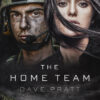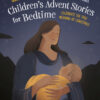
Paisley Abbey in Glasgow, Scotland.
Recently my family and I were able to travel around historic Scotland researching our ancestral ties to this beautiful country. One of the amazing places we visited was Paisley Abbey where our ancestors, the Lords Cathcart I & II, were interred. We searched and searched all over the huge church for their tombs. But we needed to know some crucial information.
Traveling Historic Scotland can flip your assumptions 180 degrees.

The interior view of Paisley Abbey’s new altar area.
Paisley Abbey was built over time in the 12th century. Major benefactors included the Cathcart family. Over the centuries, major benefactors and important people in society were very often buried nearest the altar inside churches. The less important a person in society, the farther from the altar. knowing this, we searched every brick and tomb. We searched all the carvings and stones.
The volunteer guide pointed out Cathcart Aisle and a small alcove behind the choir. We found more recent (1800s) Cathcarts that would be very distant cousins. But no sign of the lords’ gravesites.
Then, our guide mentioned that the huge cathedral had a different design than its original.
The historic altar had been destroyed as the Paisley Abbey, several times from war and a huge architectural mistake when one of the roof rebuilds crashed down from poor workmanship. Over time, the altar was moved as the abbey was expanded and rebuilt.
But one wall, the Old Wall, still exists.

Cathcart Memorials at Paisley Abbey in the Old Wall.
The guide pointed out the difference in the height and narrowness as potentially guards against Viking raids versus the new walls with windows at a more normal height. Then he mentioned the original wall, hidden mostly behind a long line of screens that told the story of the abbey. He pointed out where the original altar likely stood. People commonly interred in the thick walls of historic Scotland’s cathedrals over the centuries.
We’d been searching in the wrong place the entire time because we didn’t know the altar moved!
The ancient Cathcart tomb is a large stone carved in Latin, pretty high up below very narrow windows on the original monastery wall. We all admired the beautiful stained glass, more recently placed, but still gorgeous in the ancient church. Then…
We found them! A long brass plaque beneath the carved words, different centuries and yet the root of our Cathcart roots. Just one branch on our family tree. But I am so happy to have found them and a little more information to share with future generations.
All that time scouring every nook and cranny in the choir, altar, walls, and floor. Often we chase all around the answer, not realizing it’s the wrong spot because of an assumption based on the way things look right now. What a great example those few hours gave me! When I’m methodically searching and not finding, I learned from historic Scotland to ask God to point me in the right direction regardless of my assumptions.

Angela Breidenbach and her daughter pay their respects to ancestors at Paisley Abbey.
Angela Breidenbach uses the research from her travels in her historical novels.
She’s a genealogist and the president of the Christian Authors Network.
You can find her at AngelaBreidenbach.com and on social media with @AngBreidenbach including Facebook, Instagram, Pinterest, Twitter.
Try one of Angela’s historical novels that include genealogical research like:
The Captive Brides Collection telling the story of Scottish immigrants who endured indenture to come to the Colonies as the American Revolution is birthed.





Vickie McDonough
April 17, 2019 - 10 : 28 : 16How cool to get to go all the way to Scotland to research your ancestors. It’s a dream of mine too. My mother’s grandmother’s family–the Dows–came from Scotland in the late 1800s to America. I’d love to learn more, but it’s rather hard to research such a common name as David and Annie Dow.